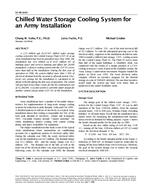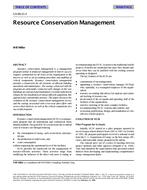An apparatus was designed to measure the heat of adsorption for a commercial glass-fibre slab. The sample insulation slab is initially dried in an ambient relative humidity of about 2%, and the test section is connected to a wind tunnel that sits in an environmental chamber. After the system reaches thermal equilibrium, a moist air flow, at a controlled temperature and relative humidity, passes through the sample. The time variation of the temperature difference across the sample is recorded and is proportional to the average heat of adsorption. By measuring the mass of the sample before and after adsorption and using the temperature difference time signature, the heat of adsorption is obtained for a given ambient temperature and relative humidity. (This heat of adsorption was found to decrease as the mass of the water vapour adsorbed increased). The overall precision for the measured average heat of adsorption is estimated to be about 15%, however, the expected error in the correlations is much smaller. The main source of this error is due to the measurement of the mass of adsorbed water vapour. The measured heat of adsorption is less than the isosteric heat of desorption as deduced from data in the literature and for the temperature range considered.
KEYWORDS: measuring, glass fibre, thermal insulation, adsorption, heat, relative humidity, wind tunnels, climate chambers, heat flow, steady state, temperature, temperature difference, ambient temperature, water vapour, calculating, equipment
Citation: Symposium Papers, Baltimore, MD, 1992
Product Details
- Published:
- 1992
- File Size:
- 1 file , 790 KB
- Product Code(s):
- D-17885


